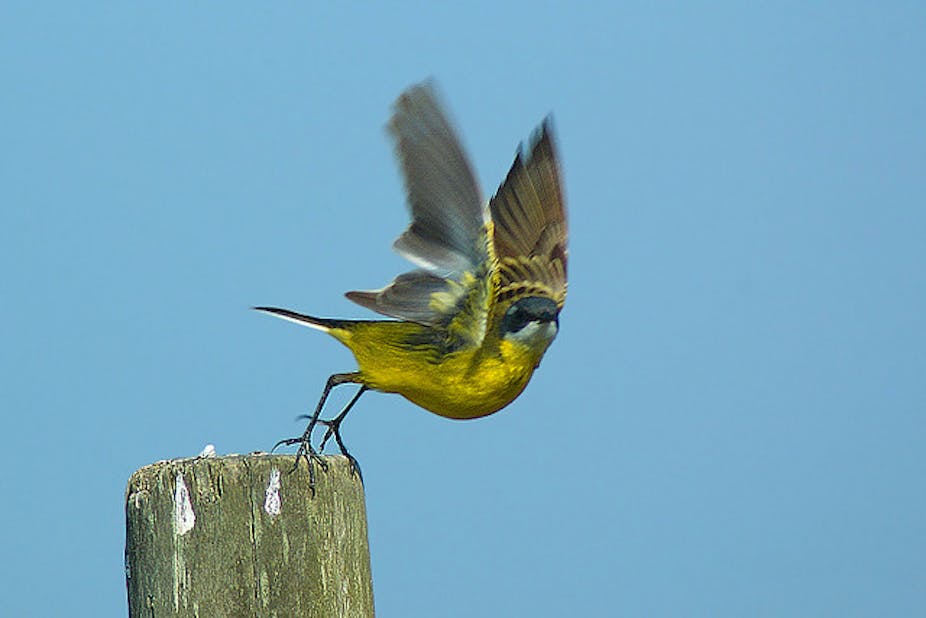The extinction of an animal is no longer the end of our opportunity to learn new things about its ecology and biology. The same technology that recently reconstructed the genome of the Neanderthal man and the 700,000 year-old horse is also being used to trace the movement of birds around the world.
The secure identification of birds is important. If some of the birds we observe here in the UK are coming from China, for example, we need to know to advance our understanding of bird migration patterns. Climate change is creeping up on us, and it’s important to know how likely birds are to pioneer new areas.

It used to be that birdwatching was a simple hobby, requiring nothing but binoculars and some books. In earlier days, technology was even less sophisticated: guns, taxidermy, the display case. But increasingly, a vanguard of scientists are using forensic technology to turn the occurrence of a rare migrant bird into something of a crime scene.
The problem is that many birds are hard to identify. Flick through a bird book and you will see any number of virtually identical small brown warblers. The problem becomes more acute when the bird you are trying to identify is a rare, vagrant subspecies from the other side of the world.
Enter DNA barcoding. Different species and subspecies of birds that look outwardly very similar may nevertheless differ very significantly in DNA sequence. Over the past 25 years of scientific work, the genes of tens of thousands of birds of known identity and provenance have been subjected to DNA sequencing. Their sequences have been uploaded to public databases like GenBank and Barcode of Life.
The “barcode” tag is a bit of a red herring – if you visualise the four nucleobases of DNA, denoted by the letters A, T, C and G, as four different coloured bars, you can produce a barcode that represents the sequence. But barcoding is just normal DNA sequencing.

Birds of the same species or subspecies generally have almost identical barcodes, while different species have different sequences. Now, when a bird of uncertain identity is encountered, we can bypass the old-fashioned and sometimes unreliable process of looking at the bird by obtaining a DNA sample that will identify it unequivocally.
This is where the “CSI: Birding” comes in. The forensic technology used to solve crimes can be applied to identification of wild animals. All it takes is a feather. Back in the old days, the gun would provide the solution. Fortunately, this is no longer necessary. Birds are often trapped for ringing and when that happens, one or two feathers usually fall off. With the appropriate permissions, a feather or two may even be removed.
Most of the feather is dead keratin, but there are a few skin cells attached at the base where it joined to the bird. Back in the lab, the DNA from those cells can be isolated, and the COI gene can be amplified and sequenced.
The barcode obtained can be compared with sequences from all the other birds in the public database and a match can normally be found. Even a faecal sample from an untrapped bird, full of intestinal epithelial cells, can be used to identify the bird as well as determine what it has been eating.
The successes of this technique have been spectacular. For example, barcoding has shown that a Desert Wheatear seen on the Scottish Coast in winter 2013 probably originated in the Gobi Desert; a Yellow Wagtail pottering around a Devon sewage farm came from northeast Russia; and a Black Redstart that left a sample of poo on the beachfront at Margate may well have come from China.
The old-school naturalists and taxidermists still have their uses, too. The museums of the world are full of the preserved skins of birds and other animals, and it is now possible to revisit them, analyse their DNA, and start to validate - or dispute - their original species designations.

There are a wider conservation uses for forensic DNA technology. Faecal samples and bits of hair or feather can be analysed to examine the genetic health of isolated populations such as the Fair Isle Wren, Siberian Tigers or Florida Pumas.
Forensic technology is can determine levels of inbreeding, the presence of males and females in the same area, and whether there is introgression or hybridisation with other species or subspecies. All without having to disturb the animals themselves.
When sleuthing for wildlife, barcoding and DNA fingerprinting can be used to trace the movement of animals, alive or dead, all around the world. We cannot yet filter the water from a lake and identify all the ducks that have sat on it recently, but the day will come.

